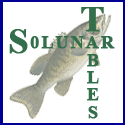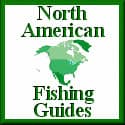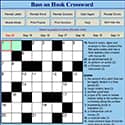Bass on Hook is Supported by our readers. As an Amazon Associate We earn commissions from qualifying purchases. For more informtion read our Amazon Affiliate Disclosure and Affiliate Disclosure Policies.
Slippin' Timber
By Ted Ellenbecker
Fall downs, log jams, or timber.
No matter what you call it, fishing wood is the best Catfishing.
Knowledge of water currents and judging underlying contour is only the beginning of the many aspects of this kind of fishing!
This is my favorite catfishing technic and I have three methods I employ when "knocking wood!"
The First Method For Slippin' Timber
 The first and most extreme technique is called "vertical" fishing.
The first and most extreme technique is called "vertical" fishing.
This technique requires heavy equipment, rods capable of handling line from 50 to 80 lbs, 2x hooks and quick reflexes, as the fight is won or lost in the first three seconds!
If you dare to try this, here's how.
Approach the structure from the upstream side and allow the current to hold the boat against the structure and parallel to it.
This method will take Cats of all sizes depending on the bait you use.
It's most effective on Flathead Catfish and Channel Catfish.
You're not relying on water depth with this method and you're not relying on the fish to move.
To present the bait, the terminal rig is quite simple, starting with a main line of 50 lbs. or heavier and in-line sinker with swivels on both ends, usually in the 3 to 4 oz. range, an 8" leader and the hook.
The size of the hook will depend on the bait you've decided to use.
It could be anywhere from a 1/0 for small Channel Catfish to a 7/0 for the Flathead Catfish.
Try to find a clearing between the logs and drop the bait to the bottom.
Put the rod in the rod holder, tighten up the line until you have contact with the sinker and give the reel one turn to lift the bait about a foot off of the bottom.
Remember, the reel is set with no give in the drag.
We're going in after them where they live and literally bouncing the bait off of their nose.
When they hit, they will turn to go deeper into the structure, this is where the reel with no drag and the three seconds comes in.
There are two ways the fish will hit the bait.
First, when he hits the bait, the rod tip will hit the water.
Quickly, get the rod out of the holder, make sure you use quality equipment so your drag will hold and keep continual upward pressure on him to keep the fish from going down.
Do not lower the rod tip to the fish to gain line as it allows the fish to reach cover.
Be aggressive, this is a situation where the most determined competitor will win.
The second bite can be misinterpreted if you don't know what you're looking at.
On this take, the fish comes from behind and below the bait and inhales it, but he holds in position.
The only thing you will notice is the tip of your rod beginning to load up the same way it would if you had snagged a piece of drifting grass or twigs in the current.
When this happens, immediately set the hook and haul the fish out of the structure.
Expect an explosion of mud and water as this fish is still green and hasn't had the chance to tire yet.
Your job is to keep him on the surface and not allow him back to the cover.
If he is able to reach the safety of the submerged cover, chances are he will put a wrap around a log and the fight is over.
While using this "vertical" fishing technique, a five pound fish is great and the bigger fish, especially over 50 lbs., become an exciting battle of strength!
The Second Method For Slippin' Timber
The second method is "slipping' timber" and it is a search technique allowing you to look for active fish and cover a large area at the same time.
It also allows you to fish the best areas of the log jam without spooking the fish.
You will want to approach the logs from the upstream side and drift at the face of the jam, near the middle if it is a big pile or closer to the inside corner if it is a small jam.
Anchor a short casting distance away being careful not to bang the bottom of the boat in the process.
If you do make any loud sounds, you'll have to add twenty minutes to the fishing time, it will take that long for the Catfish to come out from under the wood again.
Fish the middle of the face and the inside corner from this position for twenty minutes.
If you do not get any bites, pull your anchor and slip to the inside corner.
Re-anchor your boat and from here fish the channel side wall and the back channel side corner current break.
Again, fish for about twenty minutes.
If there are still no bites, you will want to slip on down to the next structure.
The Third Method For Slippn' Timber
The third technique I use and consider to be more of a big fish method is called "ambushing".
I will usually fish only two areas in a night, the first from one hour before dark to midnight, the next from 4am until two hours after sunrise.
Ambushing is a stealth technique and it combines your knowledge with patience and confidence in your judgment.
The boat is positioned strategically to allow access to the best presentation target available.
You will want the best bait available, whether it is cut, live, dip or dough bait, to call Catfish from a distance.
Once your position is set and your bait is chosen, sit back and be patient.
This technique is reserved for only the best structure on the water.
The structure, that is so good that you just know the fish are under the pile.
How To Position Your Boat
To position your boat you need to look for a couple of things.
The front or first log jam in a series of log jams will be the main target.
The fish moving through this series of structures will wind up coming out of the front edge.
At this point, look for channel ledges and steep banks that the fish will follow as they move upstream feeding.
Position your bait in these areas to intercept them when they move.
Whether you are vertical fishing, slippin' timber or ambushing, Catfishing in the timber can be the most challenging and rewarding way to fish on small and middle sized rivers.
Remember the best log jams on the river will contain a minimum of three of the elements present in the river.
Some of the elements included may be wood, rock, mass, current, bottom diversity, slack water, weed growth, depth and water temperature.
Two rules I follow in judging what to expect from a structure are:
the larger area a structure covers the more fish it may hold
the more elements a structure has to offer, the better the chance of a trophy fish.
The elements that are of importance will vary with each and every section of river.
It is up to you to study and determine which will play the dominant role in your water.
Simply fishing a structure is not enough - understanding what makes a structure good is necessary to fish with confidence.
This is a case of more is better, the more massive the pile the better, the older the wood the better, the more current variations the better!
If you have a question or comment for Ted please feel free to send it via our Pro Staff Question And Answer form.
Your questions will be answered within 24-48 hours by Ted providing he is not away fishing.
Look for other articles written by Ted Ellenbecker in Ted's Pro Staff Angler Profile










